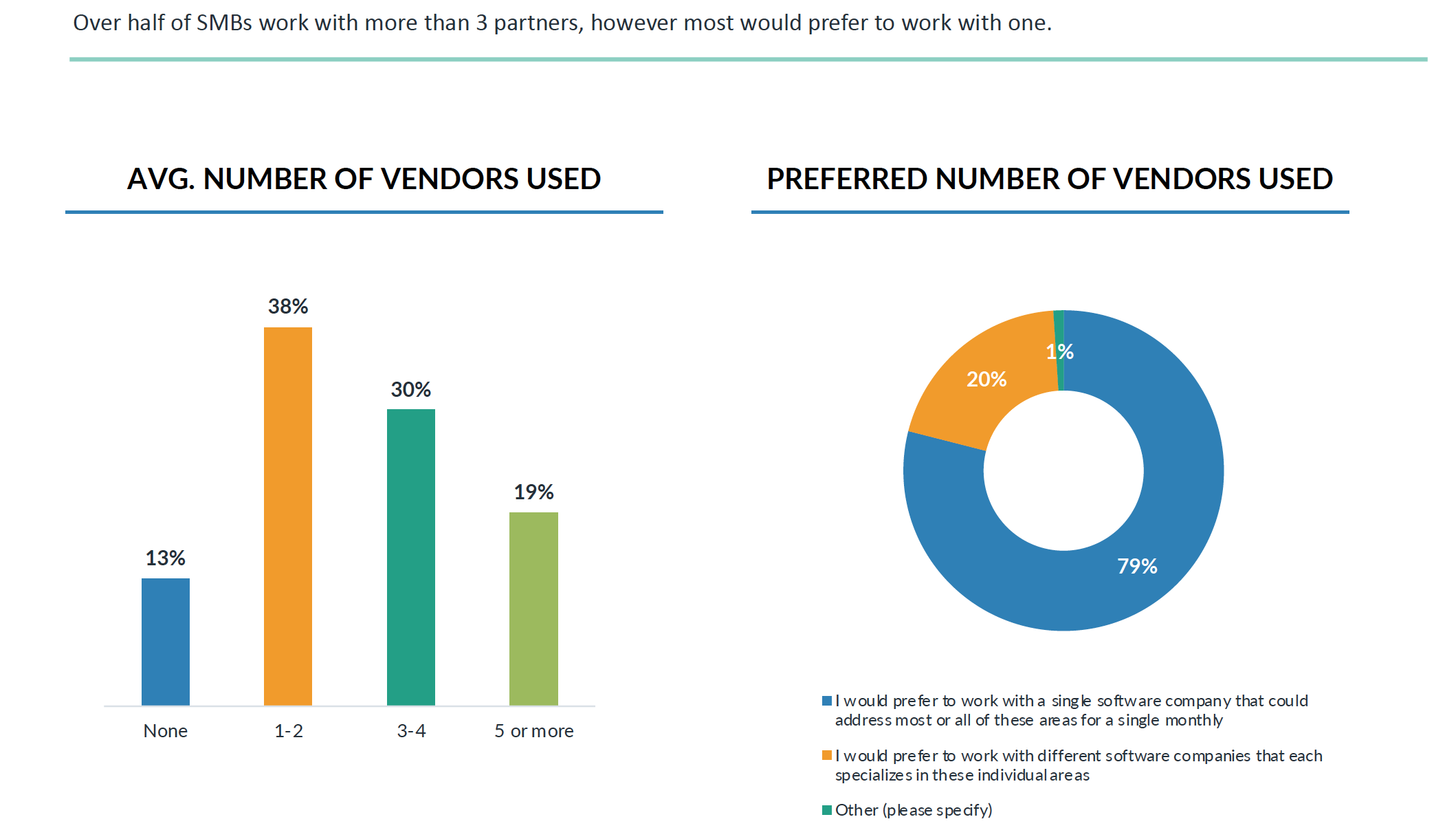GoDaddy continues to beef up its bundle. Last week, it gained greater social media capability by acquiring social media creation engine Over. This follows a trend we’re tracking among website builders to broaden offerings, as well as GoDaddy’s own recent launch of its “Websites + Marketing” program.
Before getting into those broader strategic implications, what’s the Over acquisition all about? The company provides tools with drag & drop functionality to create multimedia for social channels. Given the increasingly media-rich orientation of social posts, this is a growing gap for SMBs.
Specifically, Over offers a library of templates and layouts for social posts. Those can then be customized with a given SMB’s branding and messaging in an easy drag & drop way. That statement is essentially what GoDaddy provides in its core website product so the product philosophies align.
Moreover, after launching the Websites+Marketing program in the fall, GoDaddy realized that individuals and SMBs had trouble creating content for promotional purposes. “They didn’t know what to post or how to make that post really sing,” VP of growth & product Justin Tsai told Techcrunch.
For GoDaddy, this empowers its users to better utilize their online presence and website or blog materials for social promotion. Along with its recent expansions into marketing tools, this creates a sort of ying and yang for presence (websites) + marketing (social media), to increase traffic and engagement.
And that brings us back to the broadening of the services bundle among website providers. In addition to GoDaddy, we’ve seen Squarespace beef up its social creation offerings. WordPress founder Automattic acquired Tumblr and recently integrated content monetization tools for SMBs.
Interestingly, the expansion isn’t just from presence to promotion. We’re seeing moves in the opposite direction. That includes companies in various flavors of marketing expanding to “presence” products, including Constant Contact’s move into websites. Shopify is meanwhile moving into e-mail marketing.
In all cases, the idea is that a larger bundle boosts revenue per user (ARPU) and retention. The latter is all about having more tentacles that reach into business operations, thus anchoring a given vendor in SMB operational support. That in turn creates greater SMB switching cost and a sort of lock-in effect.
Beyond yield optimization, an expanding bundle is compelled by naturally dovetailing products. For example, the above Ying and Yang point about visual asset creation primes Over’s integration with GoDaddy. Actual systems integration will come down to execution but the combined workflow is logical.
It’s also worth noting that bundling strategies like the above are supported by Localogy’s Modern Commerce Monitor (MCM). The survey indicates that SMBs prefer “one-stop-shop” providers for various operational needs. That’s everything from marketing to back-office functions like payroll.
We’ll keep watching for these ongoing feature expansions, not to mention Over’s integration with GoDaddy over the coming months. Meanwhile, GoDaddy’s Websites+Marketing already has 1 million paying customers. Over likewise has 1 million active users creating 220,000 projects per day.





